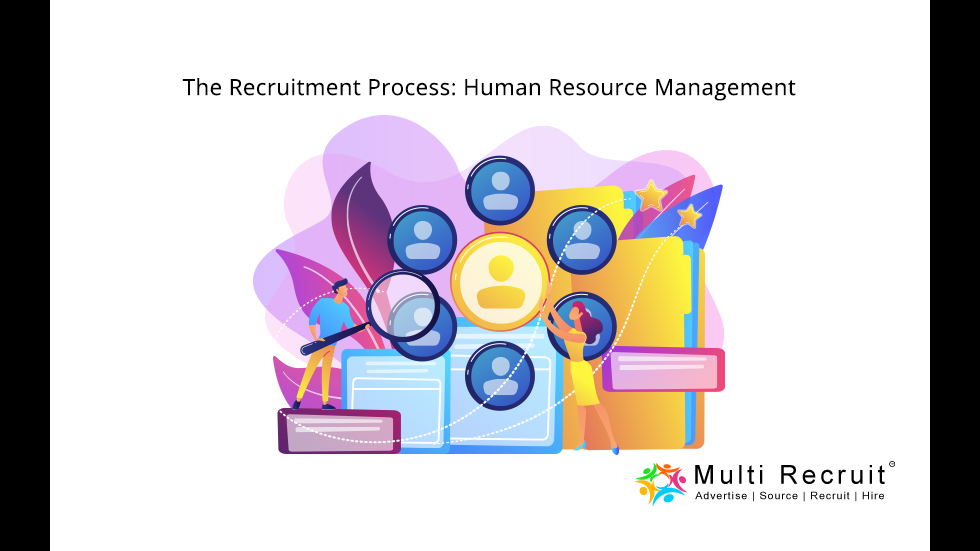A new hire must go through some kind of HR recruitment process after being offered a position. However, most companies still offboard it to hiring managers, allocating only administrative tasks to Human Resources. Your business may benefit from it if it works for you. The question is: is it really working? Are you able to move your business forward with it? You may want to say ‘yes’ out of a sense of obligation. Consider it, though. Consider it carefully.
As the world grows and evolves, so does recruitment. Today, it is simply not acceptable to use methods and approaches that were used 10 years ago. You should adapt your HR recruitment process to the changing hiring environment.
No It is impossible for any company, large or small, to operate without an HR hiring process. Exactly why? HR technology has already been adopted by your competitors. With poor hiring decisions, your business cannot keep bleeding money.
When it comes to HR recruitment, who are the key players?
We need to identify the role players before we can discuss the steps in HRM’s recruitment and selection process. In order to fill a role, people and third party service providers collaborate.
Smaller organizations may have one person representing several functions. The following is a typical example of the role players in an HR recruitment process:
- It is the hiring manager who is responsible for finding a new employee for his or her department.
- Managers within a department who report to a line manager.
- An HR recruiter is usually responsible for the recruitment process within HR.
- Pre-employment assessment tools and job boards are some examples of service providers.
- A job applicant is someone who responds to a job posting.
- An applicant who is shortlisted as a candidate is considered a candidate.
How to set up an HR recruitment process from scratch in 10 steps
If The time has come to implement new systems and procedures so that you can remain competitive in the labor market.
To help you get started with your HR recruitment process, here are some step-by-step instructions.
You can integrate it with your applicant tracking system just like a recruitment process flowchart.

1. Make sure you know what your job requires
It is common for people to fail to think about the job requirements enough when they need to fill a vacancy. They often do this because they’re pressed for time, or because they use an outdated job description template.
HR recruitment begins with this crucial step, which can make or break your hiring process.
 2. Choosing the hiring team
2. Choosing the hiring team
Collaboration in hiring has numerous benefits that cannot be denied. Besides eliminating bias, it provides different perspectives on candidates’ suitability, strengths, and weaknesses.
There should be a hiring manager, line managers, recruiter, and often a specialist in the field on the hiring team. It is a great way to find out if the candidate will enhance the team dynamics, is a great cultural fit, and has the appropriate skills.
A hiring team within the same department might not be available in smaller companies. Then, include employees who are familiar with the company and who understand the job requirements.

3. Consider the new hire’s perspective
Having determined the job responsibilities and the type of person you are looking for, you need to figure out how to find them. It is best to put yourself in the shoes of your ideal candidate and imagine how they might approach job hunting.

4. Spread the word that you’re hiring
After you have figured out where to look for the best candidates, this will be much easier.
If you’re going to use job boards, make sure you choose ones that are suitable for your industry and requirements. Get active on social media and tap into your talent pool. Make sure your careers site reflects your employer brand and integrates with your applicant tracking system.

5. Your application process needs to be refined
Be Easily accessible and approachable. Make sure your application process is easy and interactive. In this case, automation comes to the rescue. Implement an automated response system that acknowledges every application, along with a chatbot for FAQs. You will be able to build your employer brand and make applicants feel appreciated by doing this.

6. Shortlist of candidates
After following the above steps, you should be able to come up with a shortlist of candidates quite quickly.
During the shortlisting process, candidates must still be interested in the position. It is likely that applicants and candidates will lose interest in you if you ignore them for weeks and then suddenly contact them. Set up interview dates after compiling your shortlist and conducting a quick screening interview (by phone or online). Ensure all candidates and members of the hiring team are informed of all dates, times, and details. Give candidates an idea of what to expect during the interview and how much time they should set aside.
Make sure that the hiring team compiles their individual interview questions and shares them so that they are all on the same page.
 7. Taking interviews
7. Taking interviews
You should always make the candidate feel welcome and introduce them to the hiring team, regardless of whether the interview is conducted by video conferencing, a conference call, or a face-to-face meeting.
Someone on the hiring team should be responsible for overseeing the interview process to ensure it doesn’t run over time or divert from its intended purpose.
It is important that the hiring team confers as soon as possible after each interview in order to determine whether the candidate will advance to the next round of interviews, be declined, or receive an offer.
When candidates are not suitable, inform them that their application has been rejected. Ask them if they can be part of your talent pool with empathy.
 8. Verification of references and assessments for employment
8. Verification of references and assessments for employment
It’s tempting to overlook this step when you’re impressed with a candidate in an interview, but don’t! There are times when people are not what they seem.
In order to land the job of your dreams, you may misrepresent yourself and con your way to the offer. Your organization is more likely to face risks the more senior the position and the more responsibility it has.

9. Job offer
A bad approach to this stage can cost you an excellent candidate.
All members of the hiring team must agree on the best candidate and their salary and benefits. It’s important to iron out any hesitations beforehand. Make creative job offers to keep candidates interested if they want more money than you anticipated.
 10. The onboarding process
10. The onboarding process
In the HR recruitment process, this is the one almost everyone forgets.
Seeing them next month does not necessarily mean “yay, they’ve signed and accepted”. Ensure that the new hire has all the prerequisite paperwork before they start by keeping in touch regularly. Staying in touch regularly shows them that you’re looking forward to welcoming them as a new employee. If they lose interest and decide not to start, it can also serve as a warning to you.
CONCLUSION
In this blog we had discuss the different process of human resource management to know more in detail contact us. We work closely with businesses to identify the best human resource management services and recommend a solution as one of the top human resource management company in India.


Trackbacks/Pingbacks